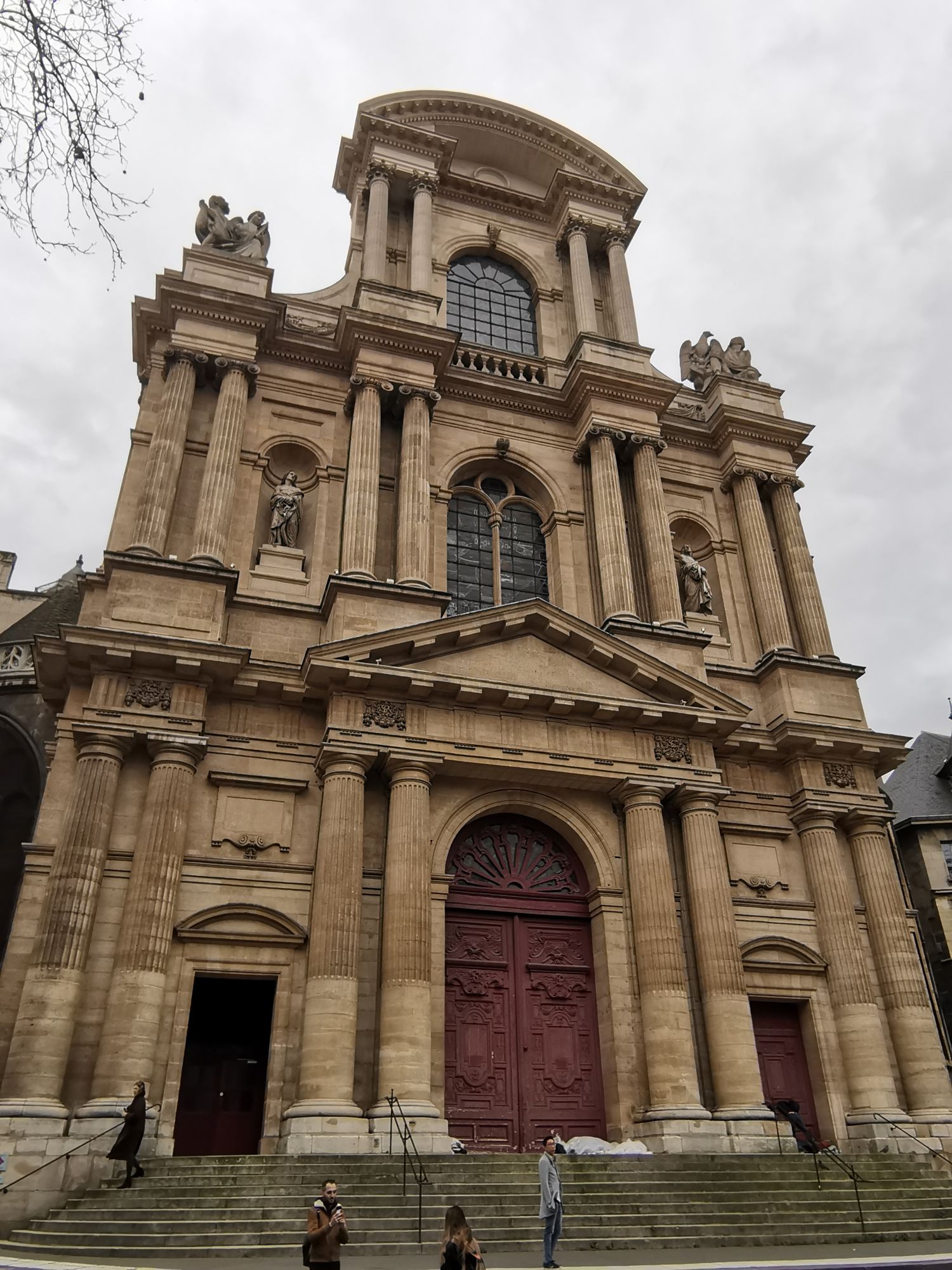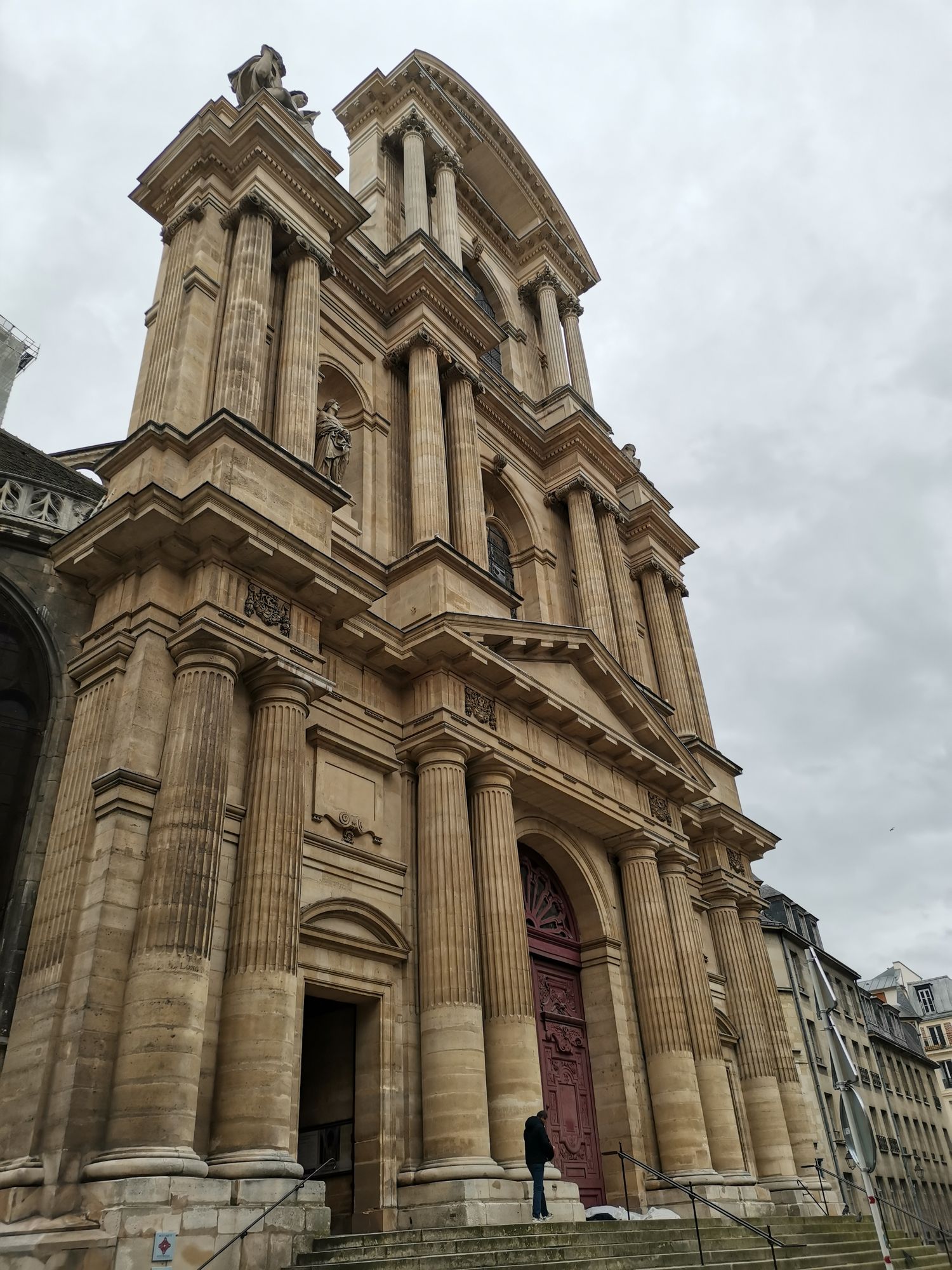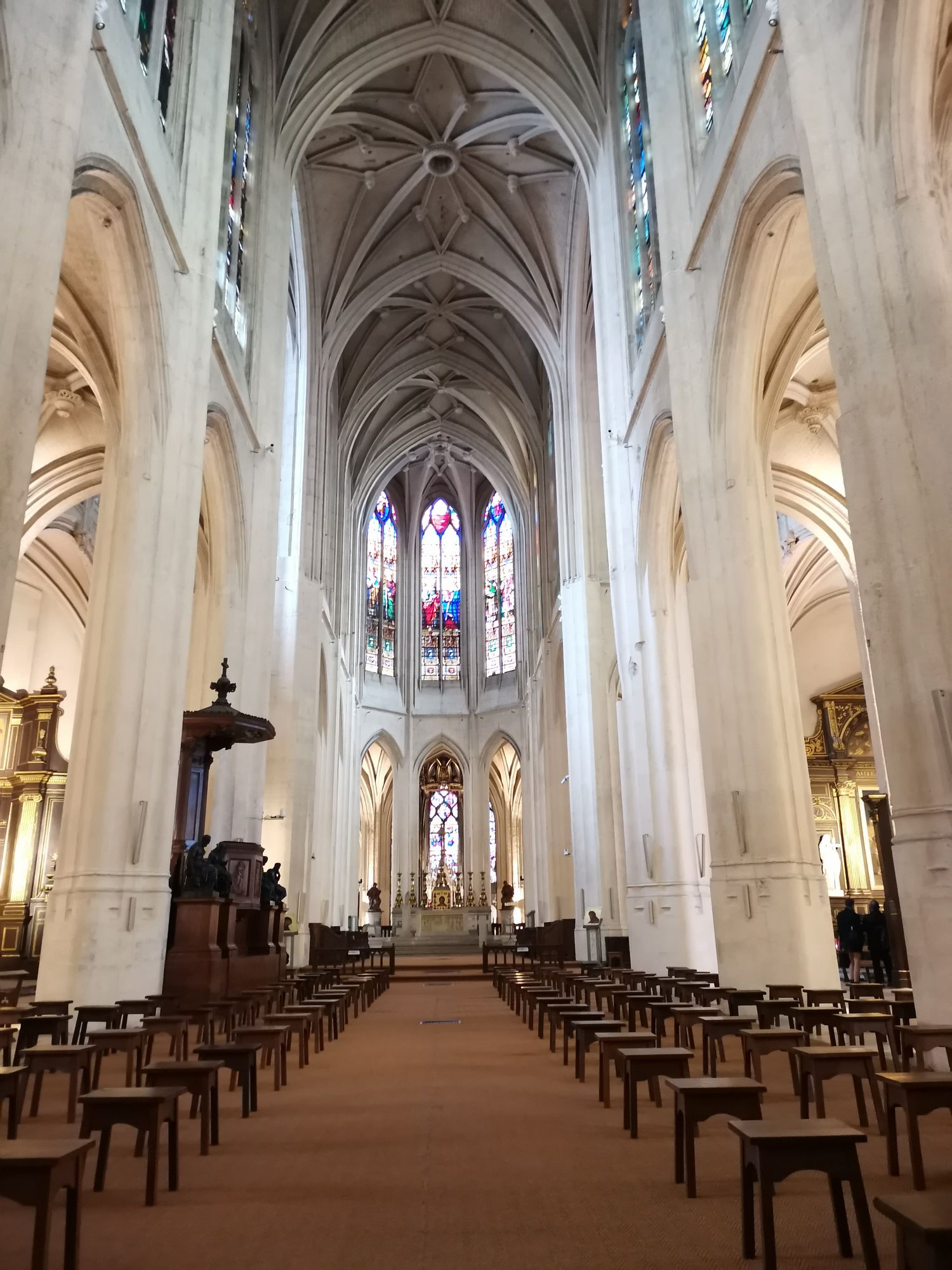Saint-Gervais-Saint-Protais church: History, architecture and heritage
Who were Saint Gervais and Saint Protais?
Saint Gervais and Saint Protais were twin martyrs who lived under Emperor Nero in the 1st century AD. Originally from Milan, they were denounced as Christians. Gervais responded to the accusations by refusing to sacrifice to the pagan gods, denouncing their impotence. He was condemned to be beaten to death with a lead-tipped whip. His brother Protais, when brought in, reviled the pagan idols and was beaten with a stick. After being put to death, he asked the executioner to finish quickly and join him. Finally, their heads were cut off.

What is the history of Saint-Gervais-Saint-Protais church?
Construction of the current church began in 1494 and took around 150 years. The craftsmen left dates to mark its progress. The Chapel of the Virgin was completed in 1517, the choir in 1540 and the transept in 1578. However, construction was interrupted during the Wars of Religion, and the nave was only completed between 1600 and 1620, just before the west facade.
What is the significance of the Saint-Gervais church facade?
The church facade, built between 1616 and 1621 by architect Salomon de Brosse, is considered one of the first monumental church facades in France to adopt the classical style of architectural orders (Doric, Ionic, Corinthian) inspired by antiquity. It served as a model for other churches of the period.
How did Saint-Gervais church survive a World War I shell in 1918?
On March 29, 1918, in the middle of Good Friday mass, a German shell, known as the Grosse Bertha, hit the church, killing 92 people and wounding 68 others. This event caused extensive damage, notably to the nave of the church. Despite this, the church has been restored several times over the years, notably under the direction of architect Baltard between 1827 and 1844.
What does Saint-Gervais-Saint-Protais do today?
Since 1975, religious services at the church have been held by the Fraternités monastiques de Jérusalem.
These fraternities bring together monks and nuns who live in the spirit of monastic solitude in the heart of large cities.
Monastic services are also broadcast live from the church on the Christian channel KTO.
What architectural features are noteworthy inside Saint-Gervais church?
The interior of the church is predominantly late Gothic. It features two-storey elevations with large pointed arches and high windows with infills. The church also features a lierne et tierceron vault at the transept crossing.
A curiosity inside the church is the Chapelle dorée, a small chapel richly decorated in the Louis XIII style.
What artistic and cultural elements can be found in Saint-Gervais church?
The church is home to a wide variety of objects classified as Monuments Historiques. These include an impressive collection of stained glass windows dating from different periods, including 16th-century windows by Jean Chastellain. The church also boasts paintings, statues, a wooden model of the church facade, an artistically decorated pulpit, stalls with motifs representing the trades of the time, and a large historic organ that has been preserved since its construction.
Who were the notable organists who played at Saint-Gervais church?
Saint-Gervais church has a long musical tradition. It was the place of service of the Couperin family, a dynasty of French musicians who were organists of the church's tribune organ for over two centuries. Louis Couperin, François Couperin and other members of the family were all organists.
The church organ is a historic instrument, built by François-Henri Clicquot between 1766 and 1768, and has remained largely unaltered over the centuries.
The Saint-Gervais-Saint-Protais church in brief
Construction of the present church began in 1616, and took around 150 years. Dates left by the craftsmen are a reminder of its progress. There was a Merovingian church before.
Big Bertha, a World War 1 shell, hit the church hard on March 29, 1918.
Since 1975, services have been held by the Monastic Fraternities of Jerusalem, a group of monks and nuns who live the spirit of monastic solitude in the heart of big cities.
Who were Saint Gervais and Saint Protais?
Saint Gervais and Saint Protais were twin brothers, martyred saints who lived in the 1st century AD under Emperor Nero. They lived in Milan. They were denounced as Christians.
When asked, Gervais replied, “How could I sacrifice to gods who have eyes and do not see, ears and do not hear, a nose and do not smell, a mouth and do not speak, hands and do not touch, feet and do not walk, and who furthermore have no breath of life?”
He was condemned to be beaten with a lead-filled whip until he died. Then Protais was brought in, who insulted Astasius and told him that his idols were disgusting garbage. He was beaten with a stick. He was made to stand up again. He then said to Astasius: “You don't know what you're doing, and I have compassion on your misery. So finish what you've started so that I can join my brother”.
The two saints had been forgotten. In the 4th century, Saint Ambrose, in prayer in the church of Saint Nabor and Felix, had fallen slightly asleep. He had a vision of two young men in white garments, praying with open arms. The next morning, at cockcrow, he had the same vision. The following night, the two young men appeared to him in the company of Saint Paul.
The apostle said to Ambrose: “If you dig where you are, you will find the bodies of Gervais and Protais”.
They dug and found the two bodies, which had been there for three hundred years. They were just as they had been on the day they died. Their bodies exuded a sweet perfume.
Some photos of Saint-Gervais-Saint-Protais church

